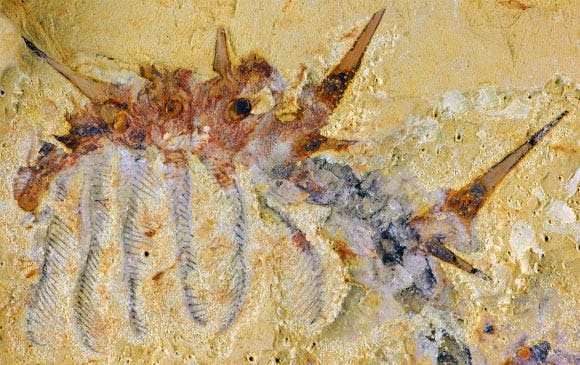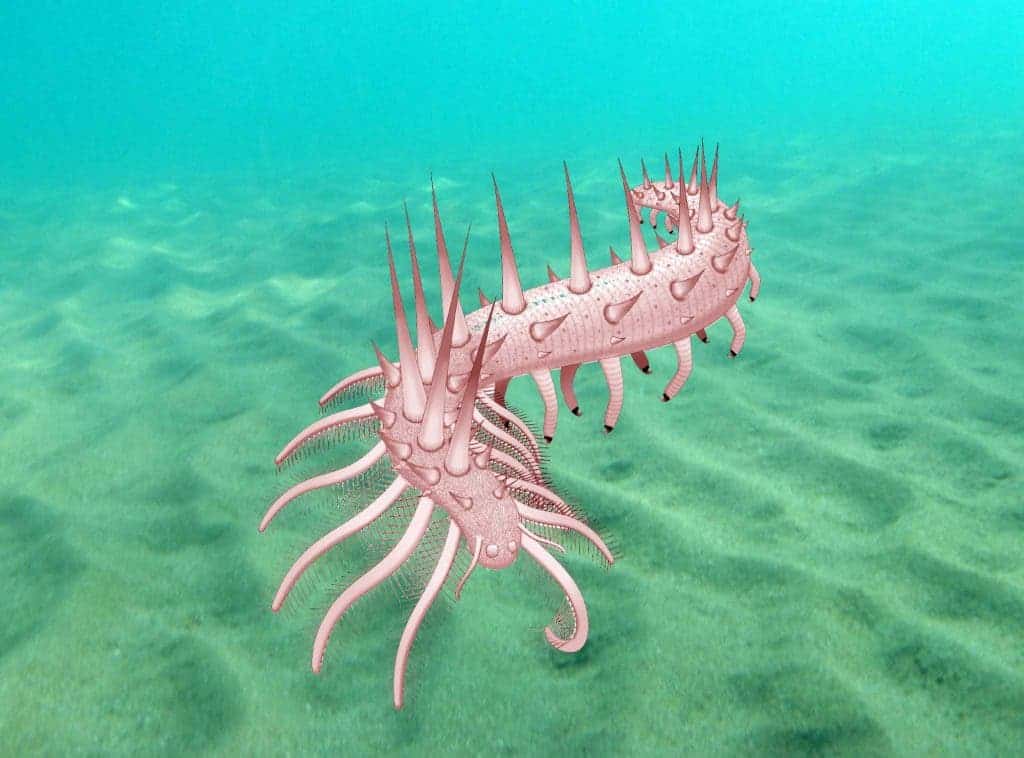Paleontologists working in China have discovered fossils of an impressively armored worm that lived during the Cambrian, 500 million years ago. Called Hairy Collins’ Monster, this is one of the first creatures to develop a spiky armor.

Today, the 180 species of velvet worms are pretty similar – they have tiny eyes, antennae, multiple pairs of legs, and slime glands. They live in dark, moist environments and usually use their saliva to immobilize their prey; all in all, you could say that they look like… worms. But their ancestors were much more hardcore than this – they were hairy, thorny, and dangerous.
“Modern velvet worms are all pretty similar in terms of their general body organization and not that exciting in terms of their lifestyle. But during the Cambrian, the distant relatives of velvet worms were stunningly diverse and came in a surprising variety of bizarre shapes and sizes,” said Dr Javier Ortega-Hernández from the University of Cambridge, UK, a co-author of the paper published today in the journal PNAS.
The 8.5-centimeter-long worm had 15 segments and lived on the bottom of the seafloor in shallow waters. The first 6 segments had hair-like structures, while the 9 ones from behind had claws. Because the claws would have not been useful at all on the seafloor, paleontologists believed it clung to rocks or other hard surfaces and simply filtered current water for nutrients.

Given this sedentary lifestyle, Collinsium ciliosum would have been a sitting duck for predators, so it did what any responsible creature in the Cambrian did: it developed a strong defense: its body built the protective claws and spikes.
The species resembles Hallucigenia, another otherworldly creature that lived during the Cambrian. During the Cambrian, there was a biodiversity explosion, with incredibly diverse and strange creatures filling up every environmental niche. However many of them didn’t have any evolutionary success.
“Animals during the Cambrian were incredibly diverse, with lots of interesting behaviors and modes of living,” Dr Ortega-Hernández said. Collinsium ciliosum was one of these evolutionary experiments – one which ultimately failed as they have no living direct ancestors – but it’s amazing to see how specialized many animals were hundreds of millions of years ago.”


